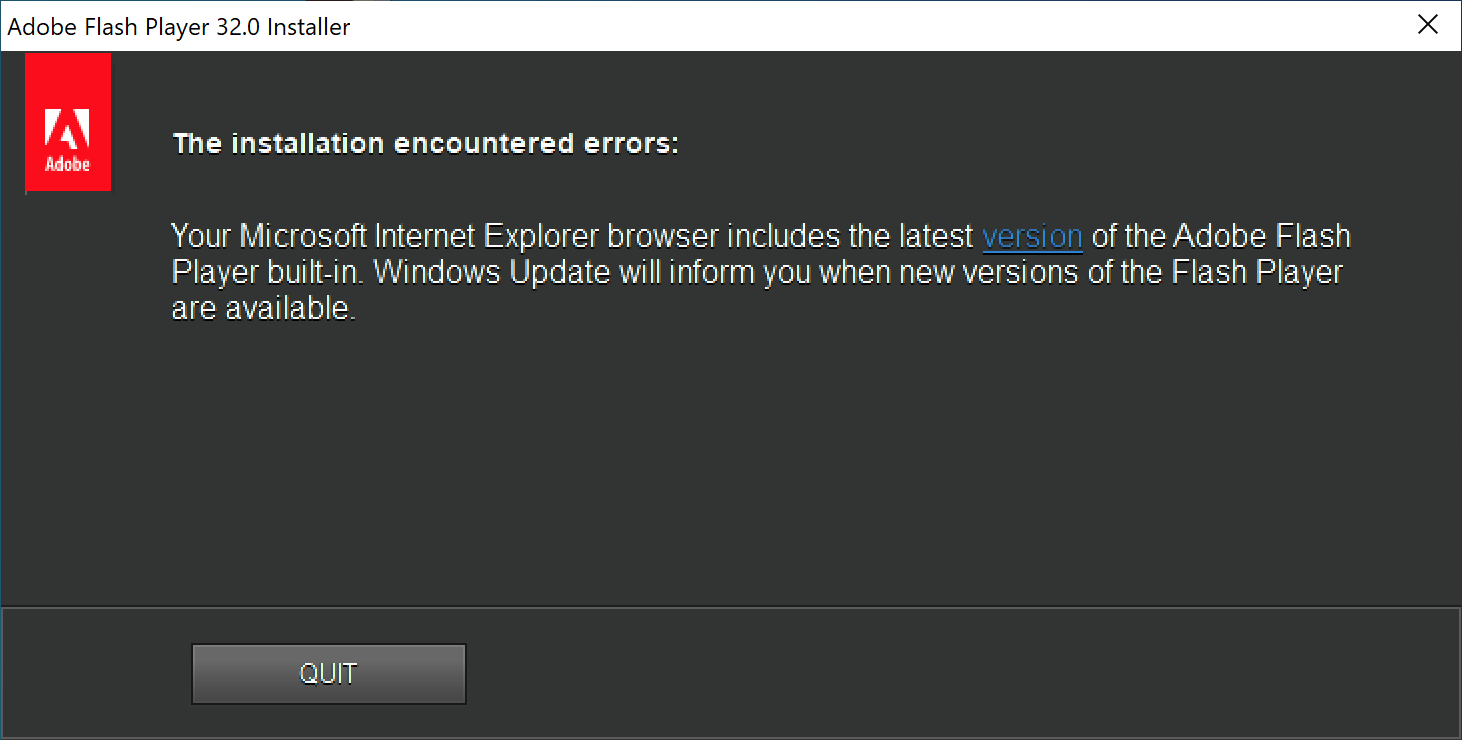How to Free Up Storage Space on your Mac; How To Disable Update Adobe Flash Player Notifications; About Flash Player. Adobe Flash Player is a computer software, distributed as freeware, that has allowed users to play Adobe Flash content. The content has often included multimedia content, internet applications and streaming audio and video.
As of December 2020, updates and support are no longer available for Adobe Flash Player. It's no longer possible to download any Flash Player software, and major web browsers such as Chrome, Safari, and Firefox no longer include their own Flash players. In tests done by Ars Technica in 2008 and 2009, Adobe Flash Player performed better on Windows than Mac OS X and Linux with the same hardware. Performance has later improved for the latter two, on Mac OS X with Flash Player 10.1, and on Linux with Flash Player 11. Adobe Flash Player is compatible with all of the widely used Internet browsers out today, such as Mozilla Firefox, Google Chrome, Opera, Safari and Internet Explorer. Once a great client runtime to have for additional performance has now become a necessity for the great majority of Internet users.
After 24 years of fun games and abuse by threat actors, Adobe has released their final Flash Player update and thanked everyone for the fantastic content that they have released over the years.
The first version of Adobe Flash Player was released in January 1996 and was immediately adopted by developers to create interactive content on the web. For many, the first introduction to an online game was through Flash games strewn across the Internet.
While Adobe Flash Player was immensely popular with users, it was also immensely popular with threat actors who exploited software bugs in the platform to infect users with malware.
Due to the security bugs and new technology, such as HTML 5, Adobe, Microsoft, Google, Apple, and Mozilla made a joint announcement in 2017 that they were retiring support for Adobe Flash Player at the end of 2020.
In the release notes for the final Flash Player 32 and AIR 32 released this Tuesday, Adobe thanks all the developers and customers for the amazing Flash content they have created over the last two decades.
'Today marks the final scheduled release of Flash Player for all regions outside of Mainland China. We want to take a moment to thank all of our customers and developers who have used and created amazing Flash Player content over the last two decades. We are proud that Flash had a crucial role in evolving web content across animation, interactivity, audio, and video. We are excited to help lead the next era of digital experiences,' Adobe stated in the final Flash Player release notes.
Kill switch blocks all Flash content on January 12th, 2021
Starting in January 2021, all browser developers will remove Adobe Flash entirely from their browser or have already done so. Once it is removed, there will be no way to install Adobe Flash Player again.

This removal includes Google Chrome, Safari, Mozilla Firefox, Microsoft Edge, Internet Explorer 11, and other Chromium-based browsers.
For Internet Explorer, Microsoft has already released the optional KB4577586 update that removes the 32-bit Flash Player plugin built into the browser and Windows. Microsoft Once this update is installed, it cannot be uninstalled.
Microsoft plans on releasing this update via WSUS and Windows Update in early 2021 to perform wide-scale removal of Flash Player.
As a final nail in the coffin, Adobe has introduced a kill switch that blocks Adobe Flash content from running in Flash Player starting on January 12th, 2020.
Adobe Flash Player Update Mac Safari
'Adobe will no longer support Flash Player after December 31 2020, and Adobe will block Flash content from running in Flash Player beginning January 12 2021; Adobe strongly recommends all users immediately uninstall Flash Player to help protect their systems,' Adobe warns users.
Once January 12th is reached, even if a browser supports Flash or you explicitly allow a website to use it, Flash Player will no longer load the content.
Adobe Flash Player Safari Mac 10.13.6
Related Articles:
